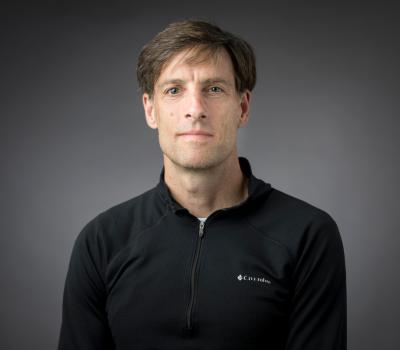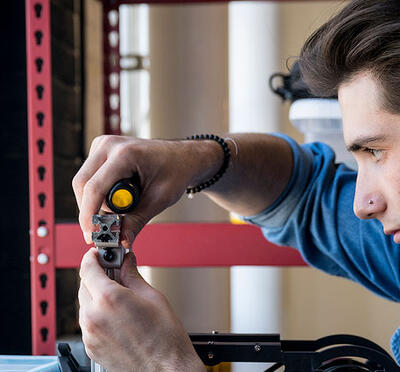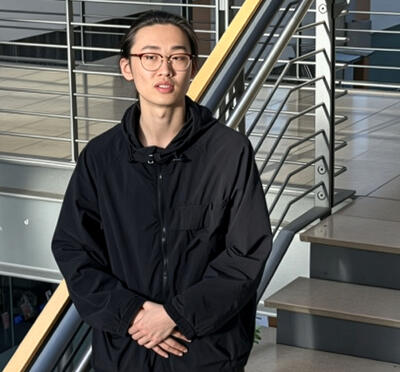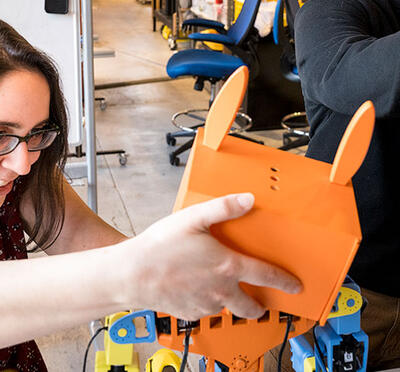Alan Fern and Sinisa Todorovic would like to teach computers and robots to have a little common sense.
“Common sense for machines really means the same thing as it does for humans,” said Fern, professor of computer science and executive director of artificial intelligence research. “If you tell a robot to go and pick up an object, and there’s something else on top of the object, common sense would imply that you move what’s on top first and then pick up the object.”

But teaching common sense to machines, even neural networks that can learn from their mistakes, turns out to be difficult.
“It’s one of the unexplored areas in artificial intelligence,” said Todorovic, professor of computer science. “You want AI systems that don’t need a lot of training data to act. You want a system that can derive conclusions and reactions without any training.”
Mainstream cognitive research hypothesizes that intelligence and common sense follow from physical laws, such as the conservation of energy, and principles of brain function. “We don’t really agree with that idea,” Todorovic said. “We think common sense develops from the interaction of humans with the environment. Many people do develop common sense, but you can always find examples of people who don’t.”
So, the Oregon State researchers are taking an unorthodox approach. They’re turning to young human analogs — children 6 months to 4 years old — to understand how common sense is developed from experience, essentially from the bottom up. Robots could eventually be designed to develop common sense in a similar fashion.
With the support of $9.7 million from the Defense Advanced Research Projects Agency, Fern and Todorovic are partnering with Karen Adolph, the renowned director of the Infant Action Lab at New York University.
Adolph and her team study how children learn to crawl, sit, stand, build with blocks, and engage in other tasks. She has developed video systems to record and annotate the steps toddlers take as they explore a simulated playroom in the lab.
Todorovic and his team are analyzing the videos to explore how toddlers decide what to do. Using computer vision software, the researchers collect data on each child’s movements and poses — where eyes are looking, and the positions of feet, knees, hips, arms, and heads. They aim to break down decisions into micro-steps and to automate the annotation process.
“Children don’t have preconceived notions about what to do, but they obviously have some intelligence,” Todorovic said. “Children explore, try things out, and, in the process, make mistakes and self-correct. These are our goals for common sense. Robots should be exploring, making mistakes, correcting those mistakes, and getting to a destination or finishing a task.”
The interdisciplinary nature of the collaboration is yielding fresh insights with implications beyond the scope of this project. Psychologists bring expertise in human cognition and behavior, while engineers push the boundaries of technology. Together, they are forging a new understanding of the interaction of human subjects and machines. Among the outcomes are new hypotheses for psychology researchers, as well as improvements in computer vision and data analysis.
“We are revolutionizing behavioral psychology research with this work. That’s one of the big payoffs,” Fern said.
Such collaboration has become a hallmark of robotics and AI studies in the College of Engineering. Other researchers are working on AI applications in adult caregiving, image recognition, robot locomotion, and autonomous underwater vehicles. Fern is also a co- investigator on a project applying AI to agricultural systems with colleagues at U.S. universities, including Washington State, Kansas State, and Carnegie Mellon.
In 2021, Oregon State became the first university in the nation to offer master’s and doctoral programs in AI as an interdisciplinary field of study. And on the drawing board is laboratory space for interdisciplinary AI research in the $200 million Jen-Hsun Huang and Lori Mills Huang Collaborative Innovation Complex, planned to open on the Corvallis campus in 2025.





